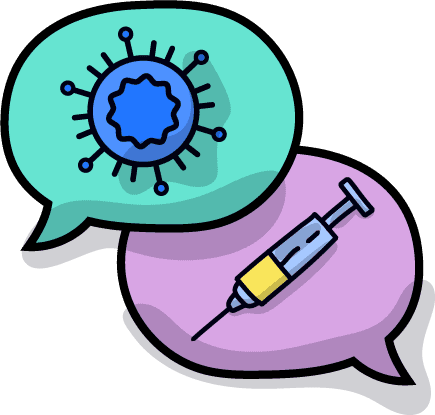With the positive news from Pfizer and Moderna in the last weeks, we finally have a light at the end of the long, dark tunnel that has been the COVID-19 pandemic. Unfortunately, we’re not out of the woods yet — in fact, the old saying “it’s always darkest before dawn” feels ominously prescient as we enter winter in North America.
For public health officials, business owners and every organization working to help flatten the curve of infections in the coming months, it is now critical to begin laying the groundwork for vaccination communication. We’ve known for a long time that communicating safety and urgency around immunization poses challenges, but with the misinformation overload that has defined 2020, communicating the need for vaccinations promises to be especially challenging this time around. Confusion and anxiety around vaccinations remains widespread (though we’re also making progress in willingness to get vaccinated) — we all have a role in building trust around vaccinations.

Transition: Pacing content
When is the right time to start talking about vaccination safety and efficacy to prepare the public? Now. Start writing messaging into your existing prevention campaigns/content calendars to being priming audiences for vaccination. Start with basic safety and efficacy messages and state you’ll be sharing more information about the specific vaccines as they are produced in the winter and spring, and that you’ll be a resource to direct viewers to vaccination information and resources as they become available.
Keep up prevention behavior messaging. Even as vaccines become a closer reality, we can’t let up on prevention messaging. It will still take months to distribute the vaccine, and for some communities, up to a year or more. That means public health, businesses and civic organizations must keep up the drumbeat of prevention behaviors like masking up, staying physically distant, washing hands, contact tracing and keeping gatherings small.

Science: How to message
Safety and efficacy of a COVID-19 vaccine is a concern needing to be addressed head on. Messaging around vaccines should be anchored in science rather than arguments that are emotionally or morally compelling. In an era of misinformation, people want to understand what they are being asked to do. Being transparent and providing facts can go a long way in securing commitment.
In plain language, unpack:
- How vaccines work
- How vaccines were developed
- Up to date distribution plans
Messaging must also connect the need for a vaccine back to people’s real lives and give people hope. Getting vaccinated means getting back on the path to a “normal” life of kids going to school, giving grandma hugs and visiting restaurants once it is safe to do so. As vaccines become available, report on vaccination numbers to show safety and positive trendlines.

Trust: Message carriers
A consequence of the politicization of the virus (among many) is a growing distrust in the government for information. Amid record-high distrust of institutions and authority figures given the events of this year, public health organizations can’t be the only voice — or even the loudest voice — that reaches the public.
Vaccination messaging must be delivered by trusted messages carriers, creating space for factual discussion to address anxieties. A diverse paid media and community outreach strategy can help connect with audiences in meaningful ways. This will take coordination with community influencers (like local doctors, researchers, businesses, local media) to share vaccination messaging across channels. Arm partners with talking points, connect them to subject matter experts and activate them to share information directly with their community groups to build message credibility.

Be hopeful
We’re not out of this yet, but if we can start building trust and energy around vaccines we can help save lives and move faster toward eradicating COVID-19. By coming together as community: as business leaders, as public health professionals, as communicators we can profoundly change our communities.
We're here to help
If you need help working through communications strategy, media engagement or audience engagement during this time, give us a call. We’re happy to talk strategy and help.

